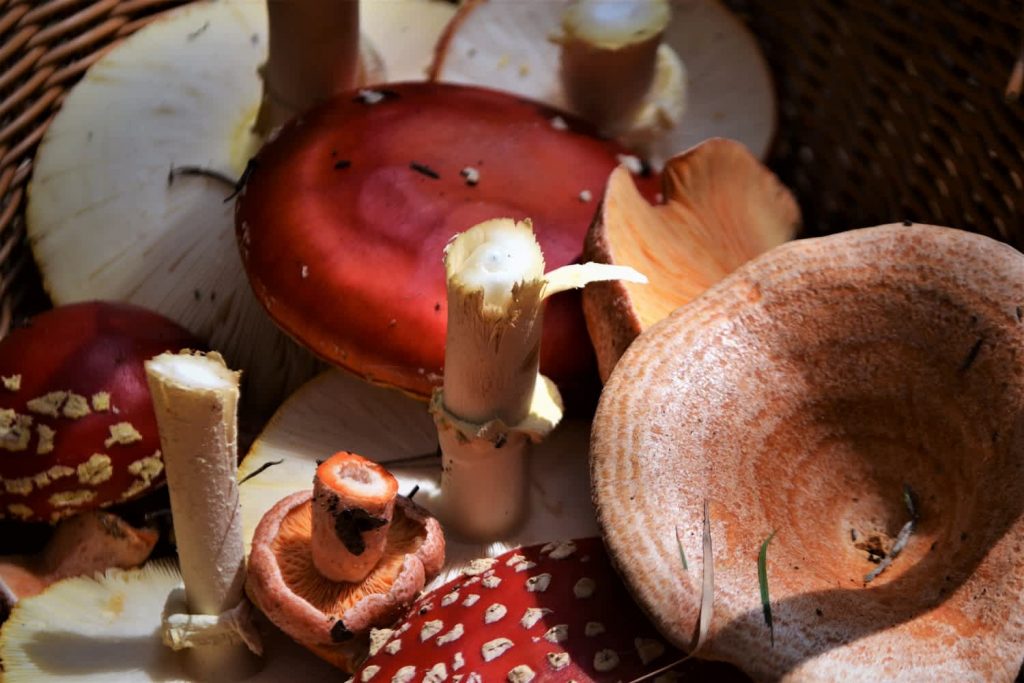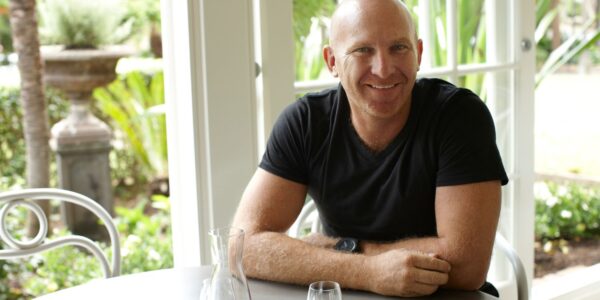It’s nearly 9am and I’m somewhere in the Southern Highlands of NSW. A chill is in the air and I’m thankful I brought a spare jumper. I’m standing on the edge of one of our country’s beautiful national forests listening to a man with a big moustache and a thick Italian accent explain why what I’m doing is silly.
“Your grandma would not need a man with a strange accent to tell her how to find food. This is ancient knowledge,” he jokes about the recent “hipster” interest in foraging.
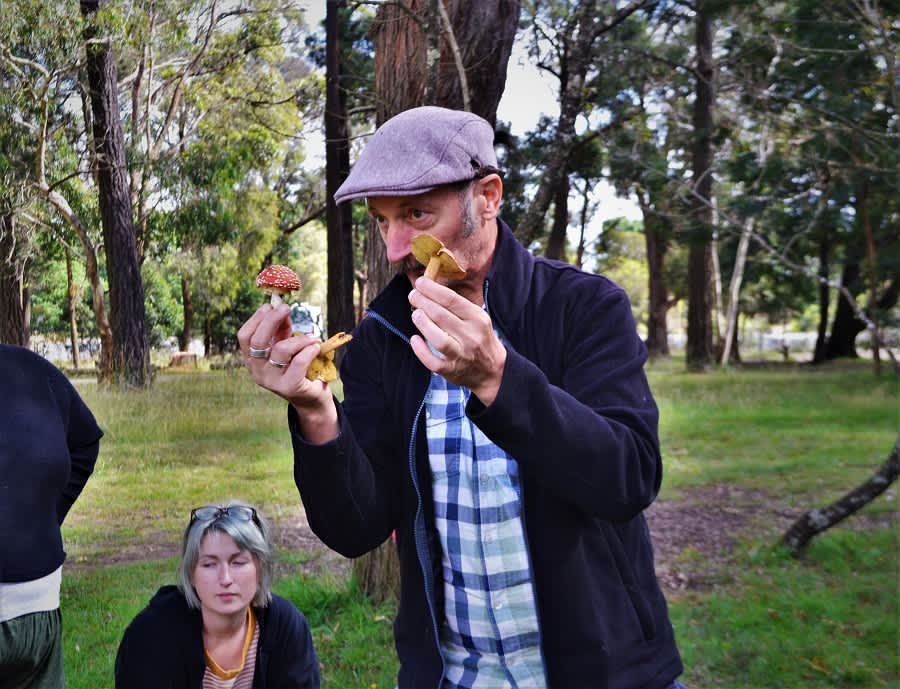
Diego Bonetto is one of the country’s leading mushroom foragers. For the past 15 years, he has been running mushroom workshops in NSW, teaching people how to find delicious edible wild mushrooms that grow abundantly in our pine plantations.
“This year is selling out,” Bonetto says. His normally quiet but steady stream of interest has ramped up to the point where he expects to run 30 workshops throughout the year in response to the overwhelming demand. It’s a reaction to the pandemic, Bonetto believes, as COVID showed the world just how fragile our societies really are.
“COVID did something quite deep and big to us as a society. It made us aware of food sovereignty, and the ability to find food in your landscape.
“Foraging is an extension of that. Everyone wanted to learn to grow food, people want to learn how to fish, want to learn how to hunt, and they want to learn how to forage.”
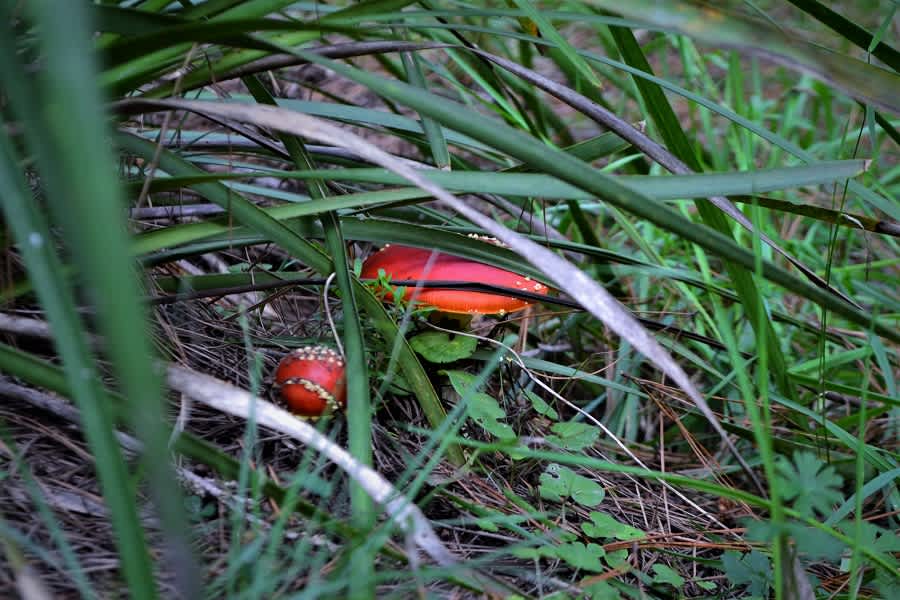
Right now is the start of mushroom season, one that Bonetto expects will be a bumper crop with all the wet weather and dropping temperatures thus far. However, for many of us, going outside to find the little white slices on our pizza means entering a different world entirely.
These little-understood organisms have generated both fear and intrigue for millennia. Where you get mushrooms, you also get reports of “deadly fungi” menacing the suburbs. At the same time, European migrants move in to capitalise on the free-range food, drawing on family history and passed-down knowledge to understand what to eat and how.
Mushrooms are not plants, nor are they animals. They take in oxygen, expire carbon dioxide, and feed off of dead or living material. They don’t photosynthesise, nor do they die when picked. The mushroom itself is actually the fruiting body of a larger organism underground known as mycelium which is actually genetically closer to us than to plants and comprises the biggest living thing on the planet.
Mycelium is everywhere, making up as much as 40% of all of the soil that we walk on. When the conditions are right, the network of fibres underground that feed on dead material send their fruits skyward to release spores and procreate. These fruit bodies are the things we pick and eat.
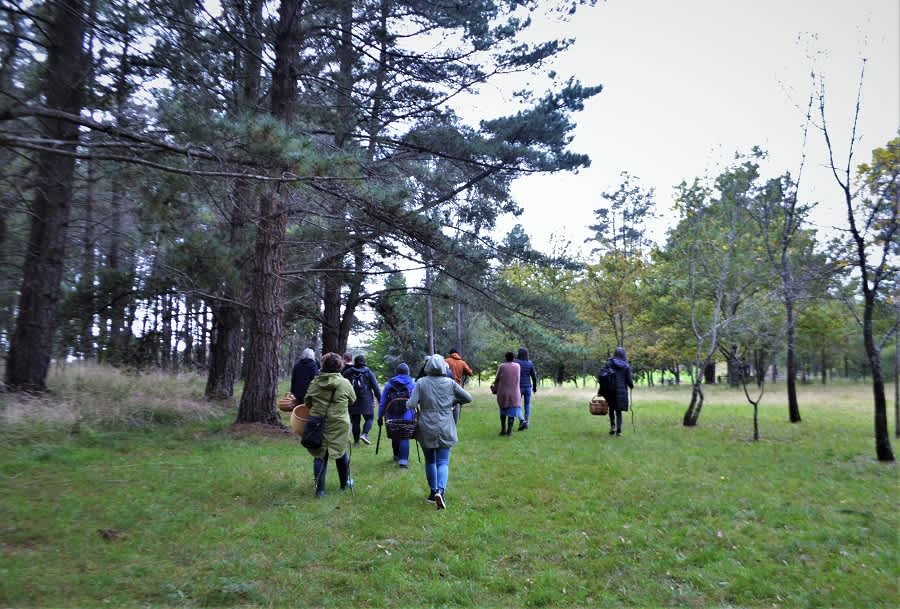
Bonetto gives us a quick run down of what we’re looking for. The small group gathered around is made up of all sorts of people. There are couples looking to indulge their passions for foraging, individuals like me with cameras and stoic enthusiasm, and families with young children eager to learn more about this strange hobby. Everyone is rugged up warm against the cold and clutching the wicker baskets as we’ve been instructed to bring.
We’re looking for two species: saffron milk caps and slippery jacks. These are two of the most easily identifiable mushrooms around, Bonetto explains, with few dangerous look-a-likes that could cause potential issues. They are beginner mushrooms.
“You don’t need to know everything about mushrooms to go mushroom picking,” Bonetto tells us. All you need is some practice finding the mushroom species you’re after and away you go.
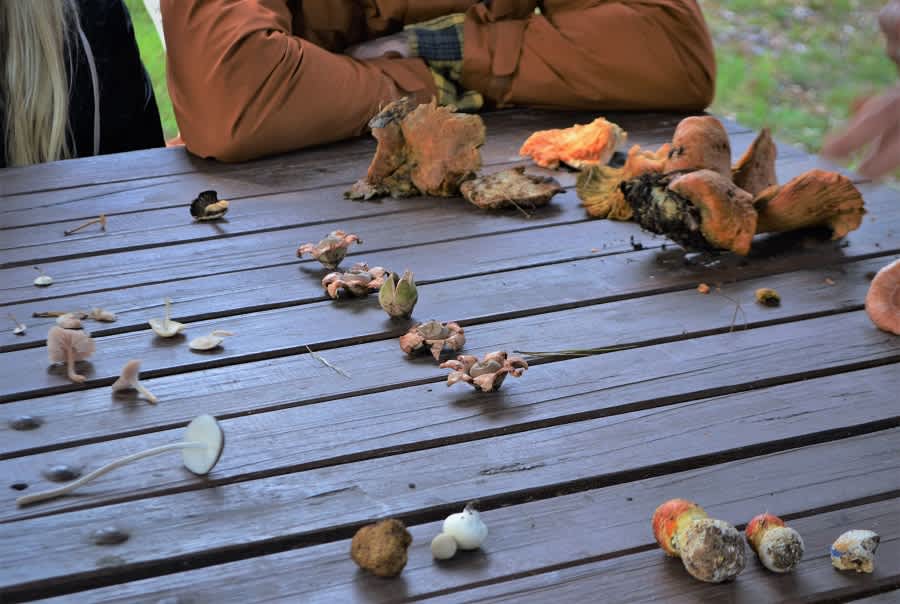
We venture off into the smaller forest behind us. Bonetto has instructed us to bring back anything that looks “mushroomy”. We stumble into the thick bush made up of towering pine trees with long grass underfoot. Using sticks to poke around in the foliage, we gather and return with a broad range of mushrooms.
Bonetto lays these out on a table and talks us through our finds. There are saffron milk caps, toadstools, earth stars, puffballs, a rooting shank, and a range of other smaller and harder to identify mushrooms. We’re talked through the edibility and quirks of the assembled mushrooms while the unknowns are shunned.
“These, and I’m going to use the scientific term here, are whatever,” Bonetto says, pointing to the mushrooms we can’t identify. “You only harvest exactly what you were you coming here for. This is not pick-and-mix. Approximation does not work in this kingdom.”
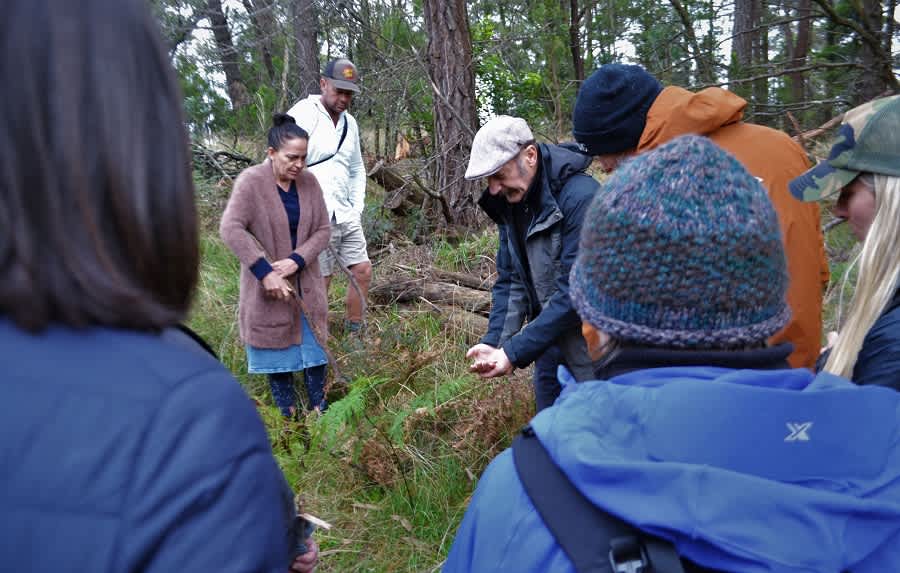
After getting another run down, we venture into the forest proper. For about half an hour we search, bent over with sticks in hand, for the mushrooms we’ve come here for.
Initially, I don’t have much luck, but I soon stumble across a whole ring of what someone thinks are slippery jacks. I pick a whole basket and wander off, my inner hunter-gatherer happy that my imaginary tribe will eat well tonight.
The forest is dense with rows of planted pines. Many national forests in Australia are co-operated by the Forestry Association as well as commercial interests who lease the land from the government in order to grow timber. It’s not illegal to enter these places, Bonetto explains, nor is it illegal to pick and take home as many mushrooms as you can carry. Unless you’re selling them, in which case you need a license, mushroom foraging is free and there are tonnes of mushrooms out there waiting to be picked.
We gather one again to show off our harvest. Most people have found a few saffron milk caps and some have brought back toadstools. These iconic red and white mushrooms are enticing but also toxic if not prepared well.
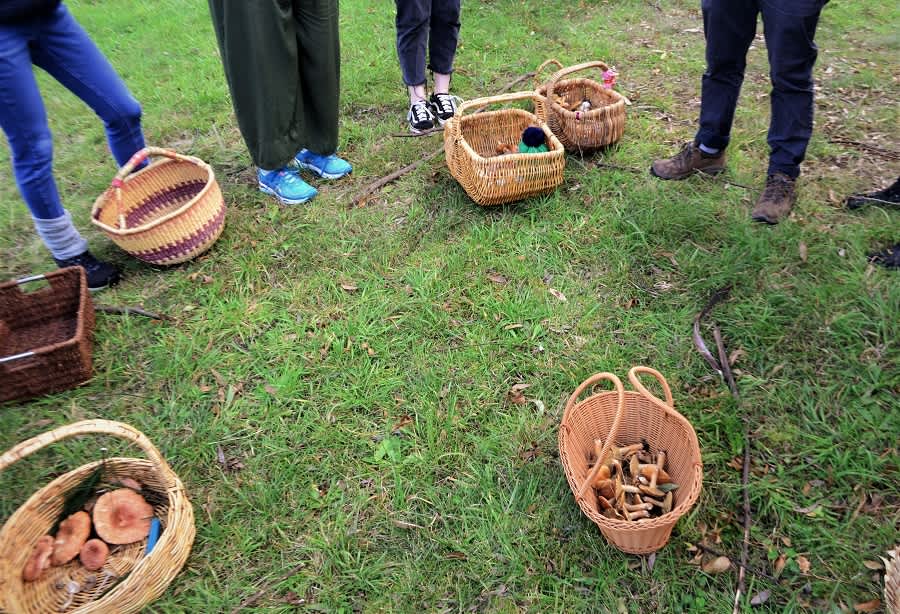
Amanita muscaria, the scientific name for this species, contains the psychoactive chemical muscimol as well as the potentially fatal neurotoxin ibotenic acid. Throughout history, people have prepared and consumed these mushrooms across Northern and Eastern Europe, as well as Asia, to bring on shamanic visions.
“For us Caucasians, this is our cultural cornerstone,” Bonetto tells us. “This is Little Red Riding Hood. This is Alice In Wonderland. This is Mario. This is Santa Claus”.
“In Western society, we think of ourselves so advanced. We come from the same Indigenous roots all over the world. We all were Indigenous. We all are indigenous. We just don’t enact it, don’t own it, don’t live it.”
“A bit too hippy?” Bonetto asks to bemused smiles. He manages to be personable and entertaining while maintaining the seriousness of the knowledge he’s imparting.
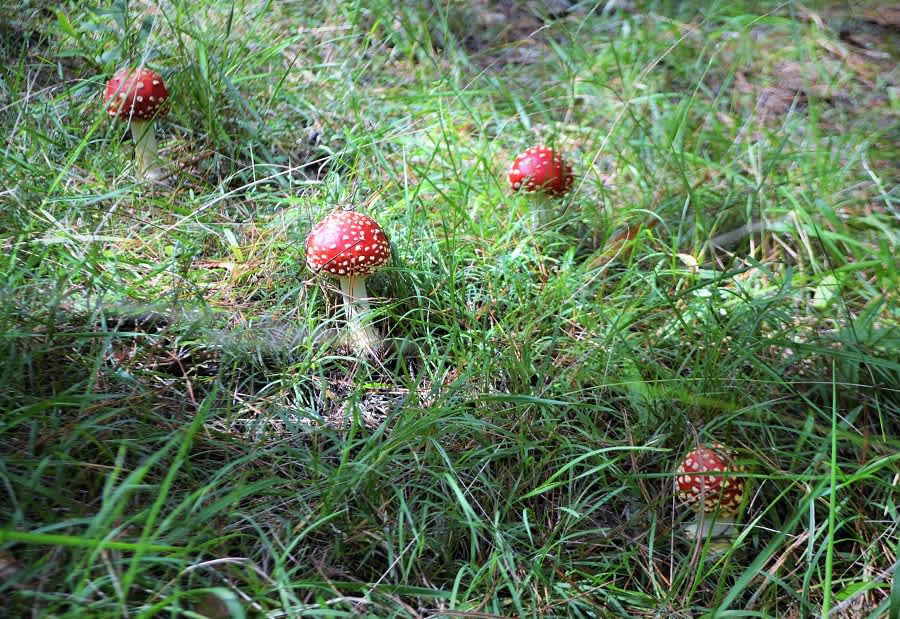
Two elderly women wander over to inspect our baskets. They scoff at the contents of mine, telling me they would have left them in the forest. “I grew up in the forest,” one of them says before walking on. Bonetto takes the opportunity to explain once again the cultural importance and significance of what we are doing here today.
“Polish people, Russian people, Ukrainians, they know this. They spend weekends in the forests camping as kids to learn this knowledge.”
It turns out that what I’ve gathered are not slippery jacks but slippery cows, another member of the same family that is technically edible but not very pleasant. I dump the basket out, concerned that my tribe will once again go hungry.
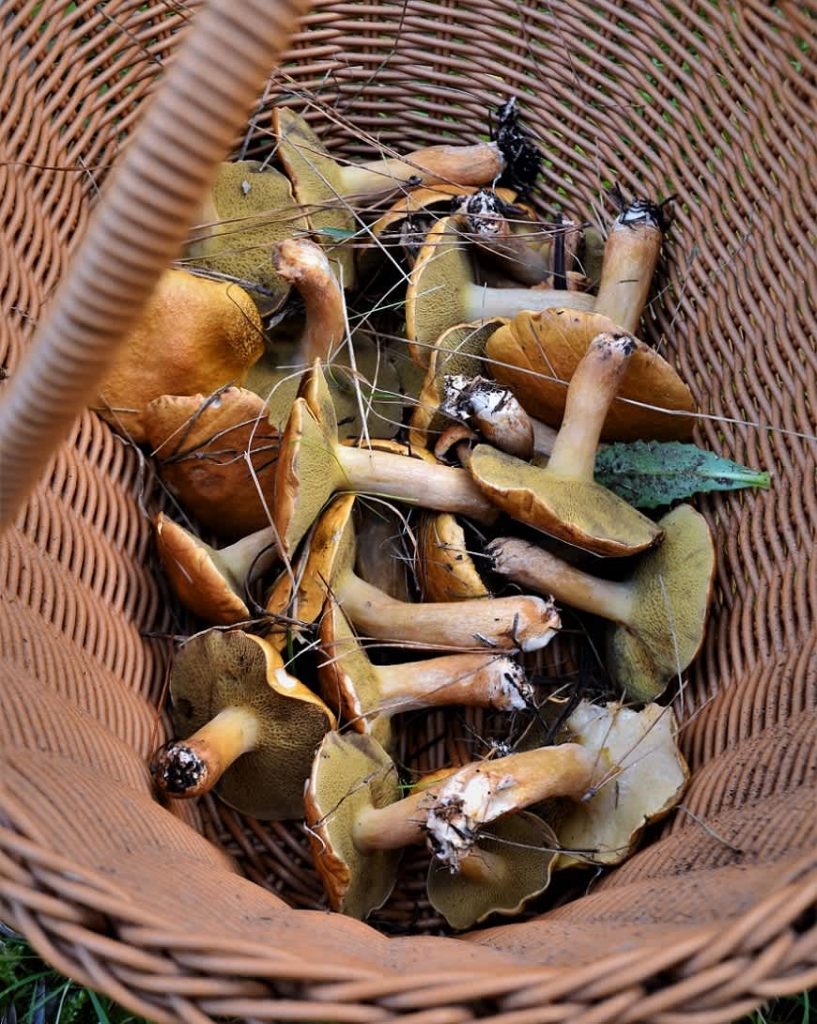
We move further into the forest for one last go. This time we wander for nearly an hour, getting quickly separated and lost amongst the trees. The forest stretches for 25 kilometres and, on a cold Tuesday, there is hardly anyone around. It’s absolutely silent between the endless rows of pine save for the occasional shrieks of black-and-yellow cockatoos that wheel overhead.
Looking for something orange partly hidden amongst a sea of browns, greens, and oranges quickly becomes dizzying but my brain adapts to the challenge and I succumb to what Bonetto calls “mushroom eyes”.
“Mushroom eyes is what allows you to see mushrooms in the forest. You go around and find one or two and then you can see them and you walk back out seeing all of the ones you didn’t see when you walked in.
“That deteriorates pretty fast into ‘mushroom fever’. You can’t stop. One more, one more. You get addicted.”
I certainly take his point. After climbing a hill to get away from the rest of the group and strike out on my own I come across trails of mushrooms emerging from the ground under pine needles and behind logs. Following them like breadcrumbs deeper and deeper into the forest, I quickly lose all sense of where I am and where I have come from. The way out no longer matters, all that’s important is that there might be another mushroom beyond that next pine.
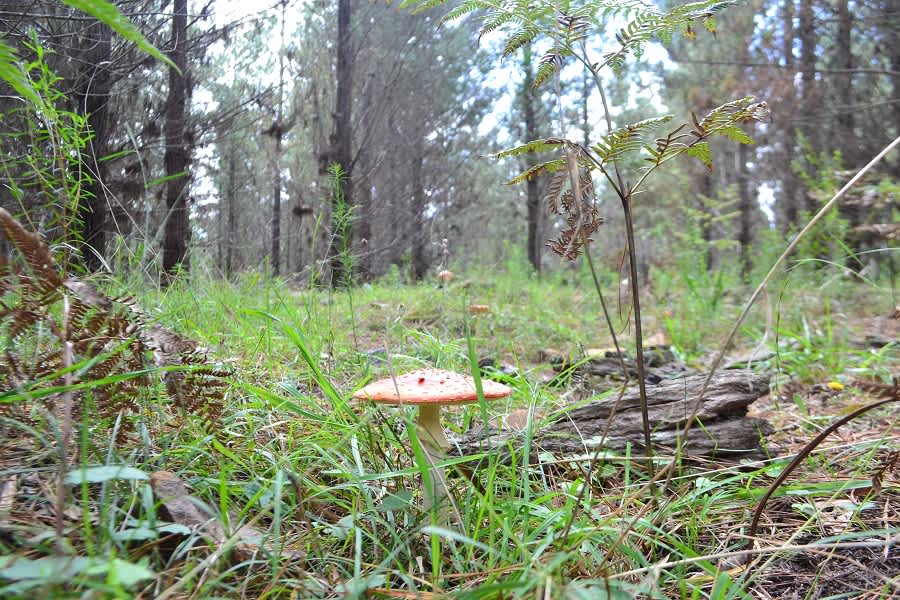
As the time draws near to return to the group for a debrief and a sample of our goods, I realise I need to head back but I have no idea of how to get there. My basket of mushrooms swinging, I follow the hill downward and eventually come to a creek that looks like the one we crossed to get into the forest, but it’s a bit bigger and densely wooded, making it impossible to walk along. Certain that I walked in a leftward curve, I push around the creek, angling myself back around to where I think the group should be.
I’m having to really pick my way between fallen branches and dense trees now. The plantation has given way to the bush and I’m surrounded by Eucalypts instead of the intended pine. I’m no longer thinking about mushrooms, only about how hungry I am and how I don’t know which direction I should be walking. A massive kangaroo suddenly bolts out of the bush near me and I wonder who was more startled to see who.
Eventually, I break through to a road and walk back along it toward the sounds of Bonetto’s voice I can hear through the silent trees. I make it back, thankful I hadn’t got lost and I’m welcomed by the smell of cooking mushrooms.
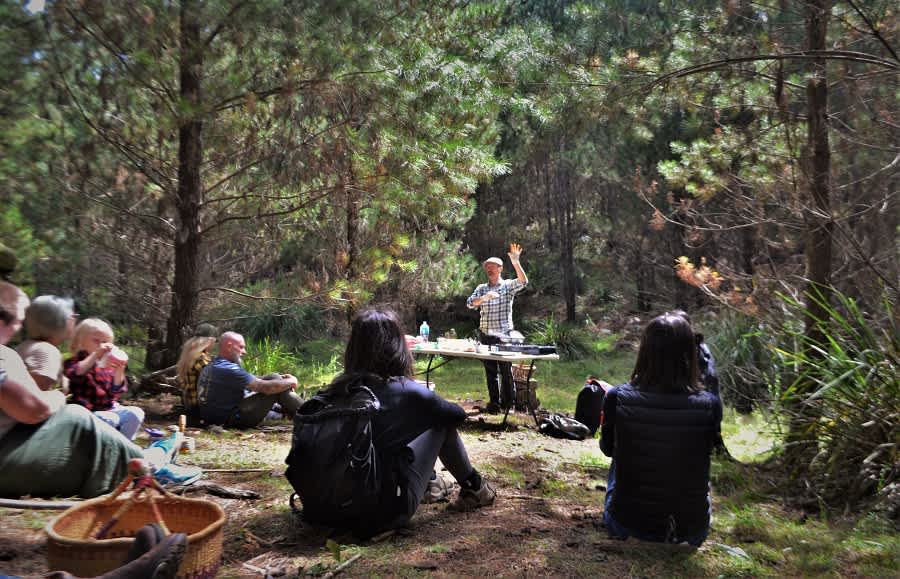
Bonetto holds forth on the power of getting out into nature, of understanding the seasonality of available food sources, and the grounding that comes with finding your own sustenance.
“What you have done today is outside of supermarkets. It’s outside of farming, agriculture, of money. This is just you and nature.”
I speak with him after the group has departed over remnants of fried mushrooms. The saffron milk caps have a creamy texture and taste but to my palette, they’re not hugely discernable from the mushrooms found on supermarket shelves.
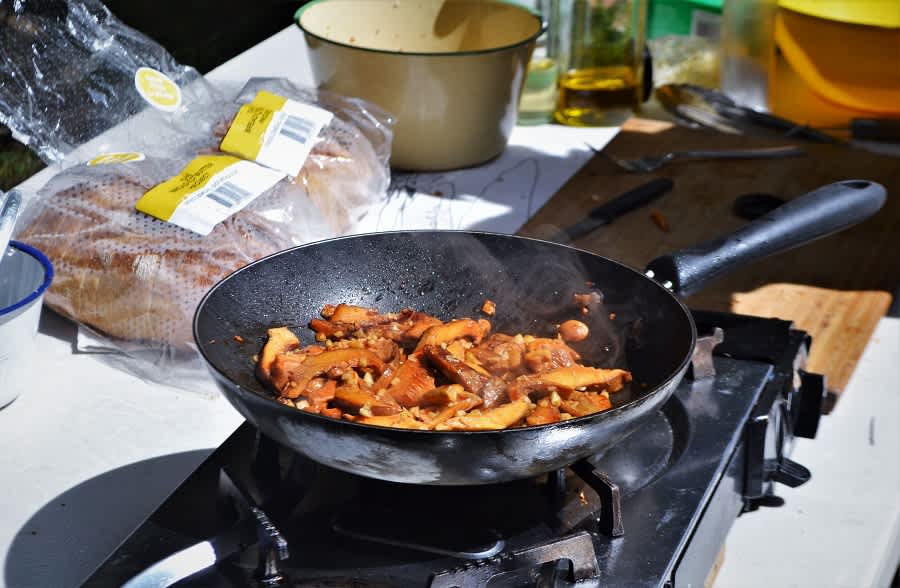
“We are so far removed from our food supply chains and systems,” Bonetto says, “that we do not understand the pain and the damage done so that we can waste at this end.”
“Understand food and understand the value of it and the abundance or scarcity of it. Understand how you as ecological actors with agency affect the ecology.”
For anyone interested in breaking into the world of mushrooms, Bonetto stresses the importance of gaining knowledge on-site and in nature. No amount of YouTube videos or Googling can give you the same information as discovering mushrooms in their natural habitat.
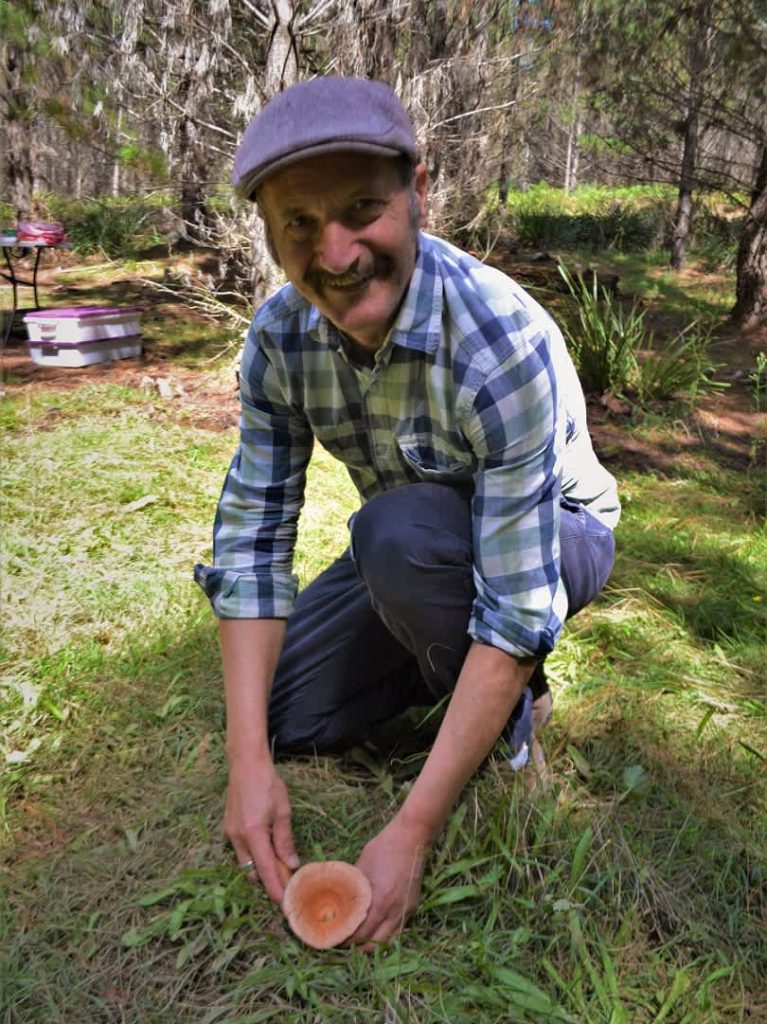
“It is important that you go and first forage with someone. It doesn’t need to be me; there’s plenty of other people out there, but go with someone because there’s an enormous amount of information that cannot be understood. Unless you’re there and learning from someone who can share that knowledge.
“Learn one or two mushrooms first. When you learn those ones, you start to understand the ecology that interacts with them. Once you understand that, then you can expand your portfolio.”
Read more stories from The Latch and subscribe to our email newsletter.


